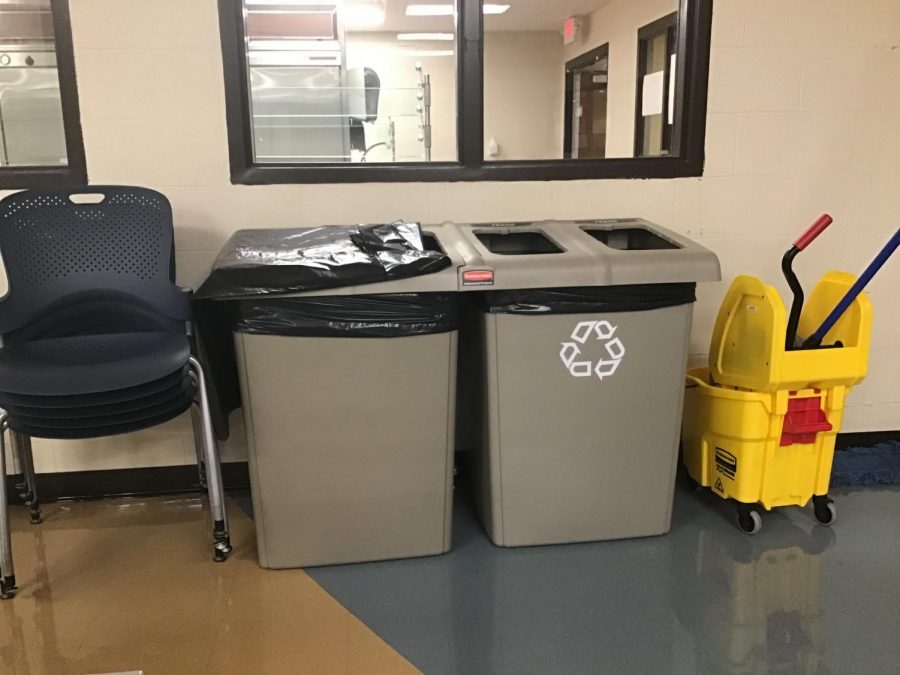Open Wide: Food Waste At WCA
Many teenagers have become desensitized to the very real dangers of poverty and famines which peers face in developing countries.
“You haven’t even touched your food! I want to see that plate licked clean, young man! Don’t you know there are children starving in Africa who would love to have a fraction of what you have?” Certainly any person between twelve and eighteen has heard similar versions of the age-old admonishment at some time or another.
Combined with the overexposure through the media, many teenagers have become desensitized to the very real dangers of poverty and famines which peers face in developing countries. However, the issue of food waste is so rampant that people are impacted domestically as well.
For instance, 41.2 million people living in the United States are classified as ‘food insecure’. As it stands, the U.S. Department of Environmental Protection (EPA) estimates in 2017, already 40.7 million tons of food was wasted.
This year, the most popular snacks in between school hours includes fruit snacks, chocolate muffins, and Mentos. “We sell about $150 worth of snacks and drinks during a typical day of school, mostly drinks [contribute to the net weight]. Usually I would say before/after school is the most busiest part of the day,” said Mrs. Ingram, employee at the Bookstore.“I think most students do not [ arrive and stock up for the week] because usually we have [kids who regularly patronize] the Bookstore,” said Mrs. Ingram, who has worked at the Bookstore for two years now and takes preventive measures to ensure food does not go to waste before being purchased.
“Like right now, we are running a bit low on granola bars and I just ordered a new shipment, but again, I am always careful to not order a lot at a time so that it does not actually go to waste. We know that everything has a shelf life and will not last forever,” added the Westminster mom of Addison and Landon, current seventh and eight graders. In contrast to most establishments, WCA as a whole goes to great pains in order to eliminate unnecessary waste, but in the end, students—the primary consumers—most influence the situation for better or worse.
According to the National Resources Defense Council, 40% of food produced, packaged, and delivered in America is wasted yearly. Compounding the problem, plastics and cardboards relegated to the recycling bin often still contain a higher percentage of food traces left in corners or caked onto the bottoms of cups, which can nullify municipal efforts to recycle. Before enrolling at Westminster, students may have anyway been accustomed to senselessly tossing the entirety of a half full bag of Cheez-Its or dumping a nearly empty Starbucks cup into the recycling bin.
Sadly, the WCA community isn’t unique: an estimated 130,020 primary and secondary schools across the country contribute to the roughly 530,000 tons of trash churned out in a year, 23.9% of which is food. Meanwhile, on college campuses the average student wastes 142 pounds of food a year.
However, our school doesn’t have to follow in the same footsteps. Finishing off the few drops of a sports drink or bag or chips doesn’t cost inordinate time or effort. Some of the food waste can also be diminished by simply serving smaller portions and returning for more later. Plus, in most cases, eating a healthy breakfast is enough to tide one over for the rest of the day. In the interest of preserving resources for rising generations, there is no better time to start building sustainable habits than as a current high schooler or middle schooler.
An article on the federal government’s website added that food thrown in the trash ended up in landfills 94% of the time. However, beyond 2030 Food Loss and Waste Reduction goals set out by the EPA for the future, if the course of the nation’s consumer industry is to change, it must start among the people themselves.
Singapore’s Democratic Party introduced rules restricting how, when, and where people can chew gum and the Croatian Democratic Union Party (HDZ) enforced mandatory vaccinations for the entire population. The USSR, which had no parties, declared routine chest X-ray examinations at least every single three years.
In the end, our government will not look over people’s shoulders on the way out the door of fast food chains, restaurants, theaters, or stadiums… neither should we expect them to. When students are attending school, of course there’s no parent or teacher to be counting the crumbs either, but there’s also no excuse.
Looking back at 2019, on average 30-40 percent of food output was wasted at the consumer and retail levels. Still being in school ourselves, there is no expectation to lower the tide of pandemic food waste at the national level, retail level, or even statewide level, only to curb the remainder of one’s own meals to a minimum.





